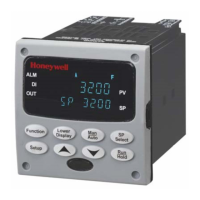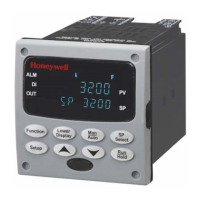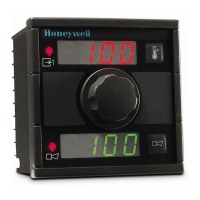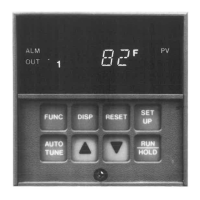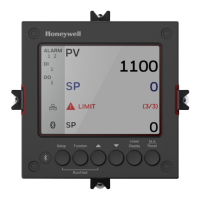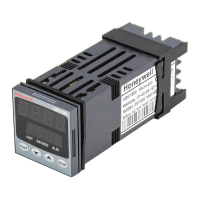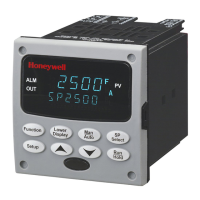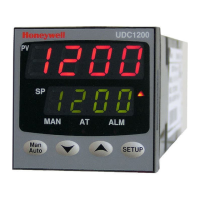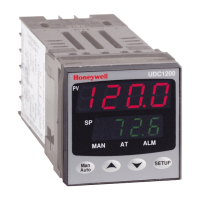10 UDC3300 Limit Controller Product Manual 1/01
2.4 Wiring
Electrical
considerations
The controller is considered “rack and panel mounted equipment” per
EN 61010-1, Safety Requirements for Electrical Equipment for
Measurement, Control, and Laboratory Use, Part 1: General
Requirements. Conformity with 72/23/EEC, the Low Voltage Directive
requires the user to provide adequate protection against a shock hazard.
The user shall install this controller in an enclosure that limits
OPERATOR access to the rear terminals.
Controller grounding
PROTECTIVE BONDING (grounding) of this controller and the
enclosure in which it is installed shall be in accordance with National and
local electrical codes. To minimize electrical noise and transients that may
adversely affect the system, supplementary bonding of the controller
enclosure to a local ground, using a No. 12 (4 mm
2
) copper conductor, is
recommended.
Taking electrical noise
precautions
Electrical noise is composed of unabated electrical signals which produce
undesirable effects in measurements and control circuits.
Digital equipment is especially sensitive to the effects of electrical noise.
Your controller has built-in circuits to reduce the effect of electrical noise
from various sources. If there is a need to further reduce these effects:
• Separate External Wiring - separate connecting wires into bundles
(see Table 2-2) and route the individual bundles through separate
conduits or metal trays.
• Use Suppression Devices - for additional noise protection, you may
want to add suppression devices at the external source. Appropriate
suppression devices are commercially available.
NOTE
For additional noise information, refer to Section 9.
Permissible wire
bundling
Table 2-2 shows which wire functions should be bundled together.
NOTE
For installation where high EMI/RFI noise cannot be avoided, we
recommend you use shielded twisted pair wires for the signals in bundle 2.
Table 2-2 Permissible Wiring Bundling
Bundle No. Wire Functions
1
• Line power wiring
• Earth ground wiring
• Control relay output wiring
• Line voltage alarm wiring
2
Analog signal wire, such as:
• Input signal wire (thermocouple, 4 to 20 mA, etc.)
• Digital input signals
• Communications
3
• Low voltage alarm relay output wiring
• Low voltage wiring to solid state type control circuits
Continued on next page
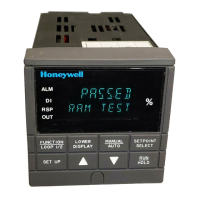
